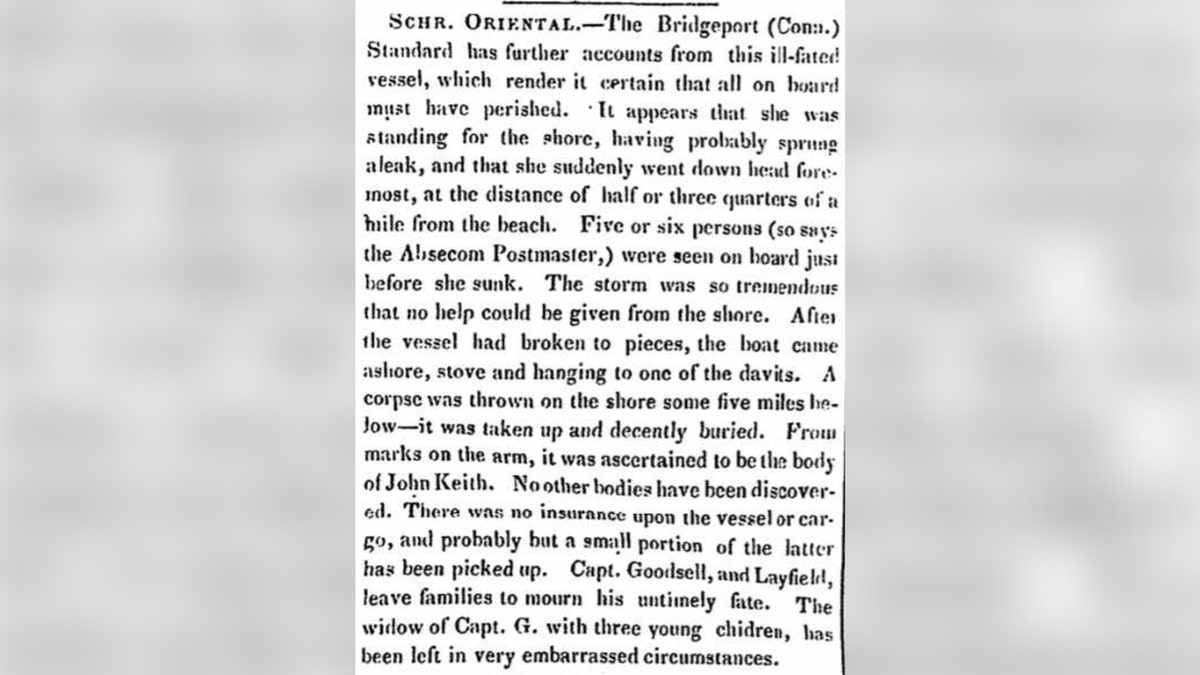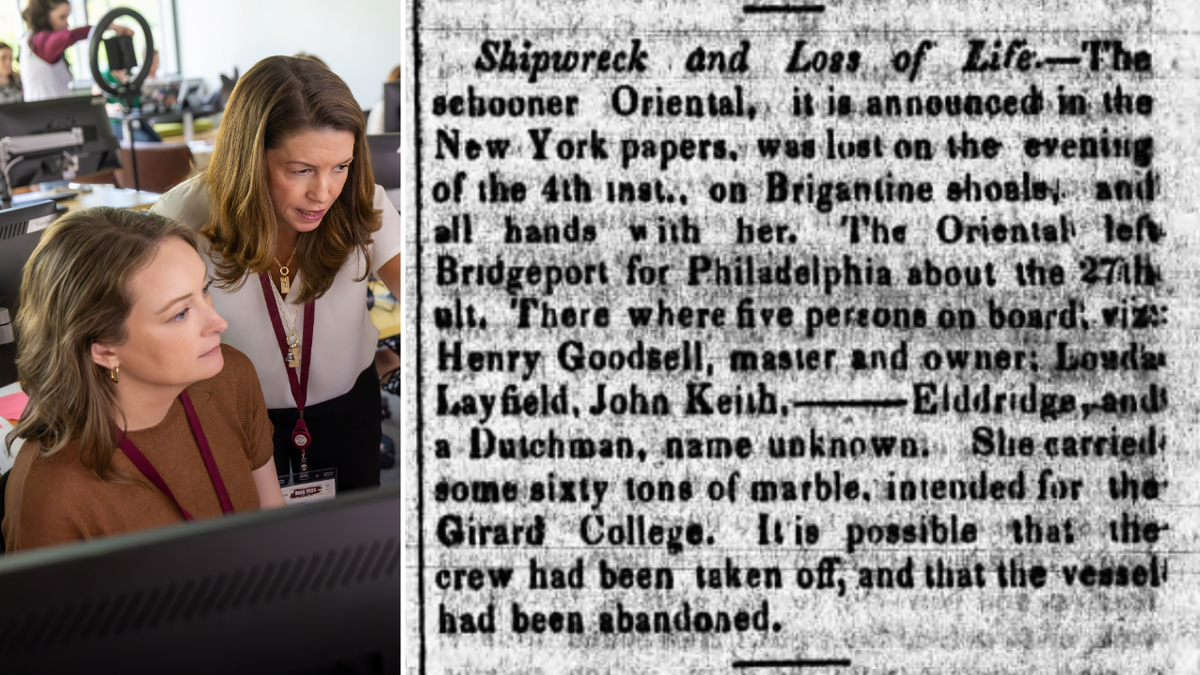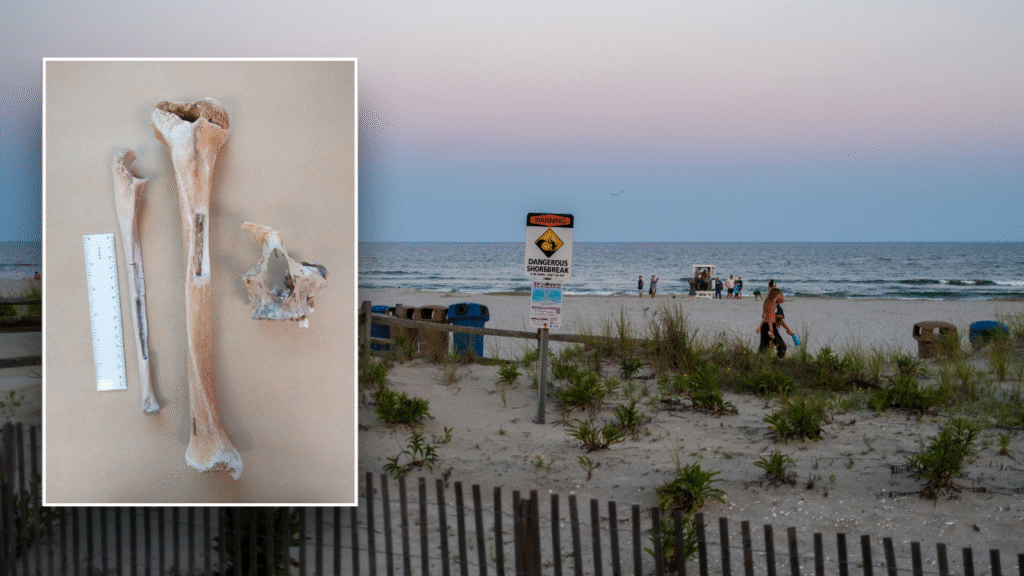Bones that mysteriously washed up on the Jersey Shore over the past three decades were recently identified, thanks to cutting-edge technology and diligent students.
Ramapo College announced the discovery in a May 21 press release. The remains were identified as belonging to Henry Goodsell, a captain who died in an 1844 shipwreck off the coast of South Jersey’s Brigantine Shoal. (See the video at the top of this article.)
The ship was carrying 60 tons of marble for Girard College, a preparatory school, when it sprung a leak and sank.
DIVERS UNCOVER MYSTERIOUS 2,500-YEAR-OLD SHIPWRECK, FILLED WITH UNUSUAL ARTIFACTS, OFF COAST OF SICILY
Goodsell’s bones didn’t wash up until over a century later, when they were found on various beaches in the Garden State.
“A skull washed ashore in Longport in 1995, and more bones were found in Margate in 1999, both in Atlantic County,” Ramapo College’s statement noted. “In 2013, additional remains were found in Ocean City, Cape May County.”
“Scattered Man John Doe went without a name for 30 years since traditional methods of investigation could not deliver an identification.”
Cairenn Binder, assistant director of the Ramapo College Investigative Genetic Genealogy (IGG) Center, told Fox News Digital that her team conducted traditional DNA testing to find a matching profile in the Combined DNA Index System (CODIS), a national DNA profile database.
“More identifications like these will be made now that we have advances in technology.”
“While there was no missing person sample on file that matched with the profiles from the bones, the bones all matched one another, so that’s how [the New Jersey State Police] learned they were all connected before we began working on the case,” she said.
METAL DETECTORISTS DISCOVER HOARD OF PRICELESS GOLD COINS DATING BACK TO BIBLICAL TIMES
Over the past several months, Ramapo students have gleaned various details about Goodsell’s life from old newspapers.
He was 29 years old when he died, and his ancestors were among the earliest settlers in Connecticut.

“Capt. Goodsell’s ancestors lived in Litchfield and Fairfield Counties in Connecticut and had all been there since the 1600s – some of the earliest European Americans,” Binder said.
“He was born in Bridgeport, Connecticut, but lived in Boston from at least the late 1830s.”
Goodsell also left behind a wife and two children when he perished; his family was financially devastated by the shipwreck.
For more Lifestyle articles, visit foxnews.com/lifestyle
“The news reported that his family was left in ‘very embarrassed’ circumstances after the captain’s death,” Binder said.
“There was a fundraiser held for Capt. Goodsell’s widow a year after his death,” she also said. Reports were that “she was destitute.”

Five or six other crew members were on the vessel, Binder noted, and all of them are believed to have died.
One was found and buried while the others were lost at sea.
Binder described the discovery as “extremely rare,” noting that Ramapo researchers have not been able to find an older case where IGG was used to successfully identify remains.
“There are a handful of cases where remains more than 100 years old have been identified with IGG, but this is the oldest we have been able to find,” she said.
“We believe that more identifications like these will be made now that we have the advances in technology to make them happen,” she added.

Authorities from various New Jersey law enforcement offices were also involved in the research.
In a statement, Cape May County prosecutor Jeffrey Sutherland said the same technology is used to “bring offenders to justice.”
“
“The hard work of Ramapo College’s IGG Center and working with the New Jersey State Police Cold Case Unit has demonstrated the power and accuracy of this new technology combined with classic detective work in solving complex cold cases that will bring offenders to justice and provide closure to victims’ families,” he noted.
Read the full article here







